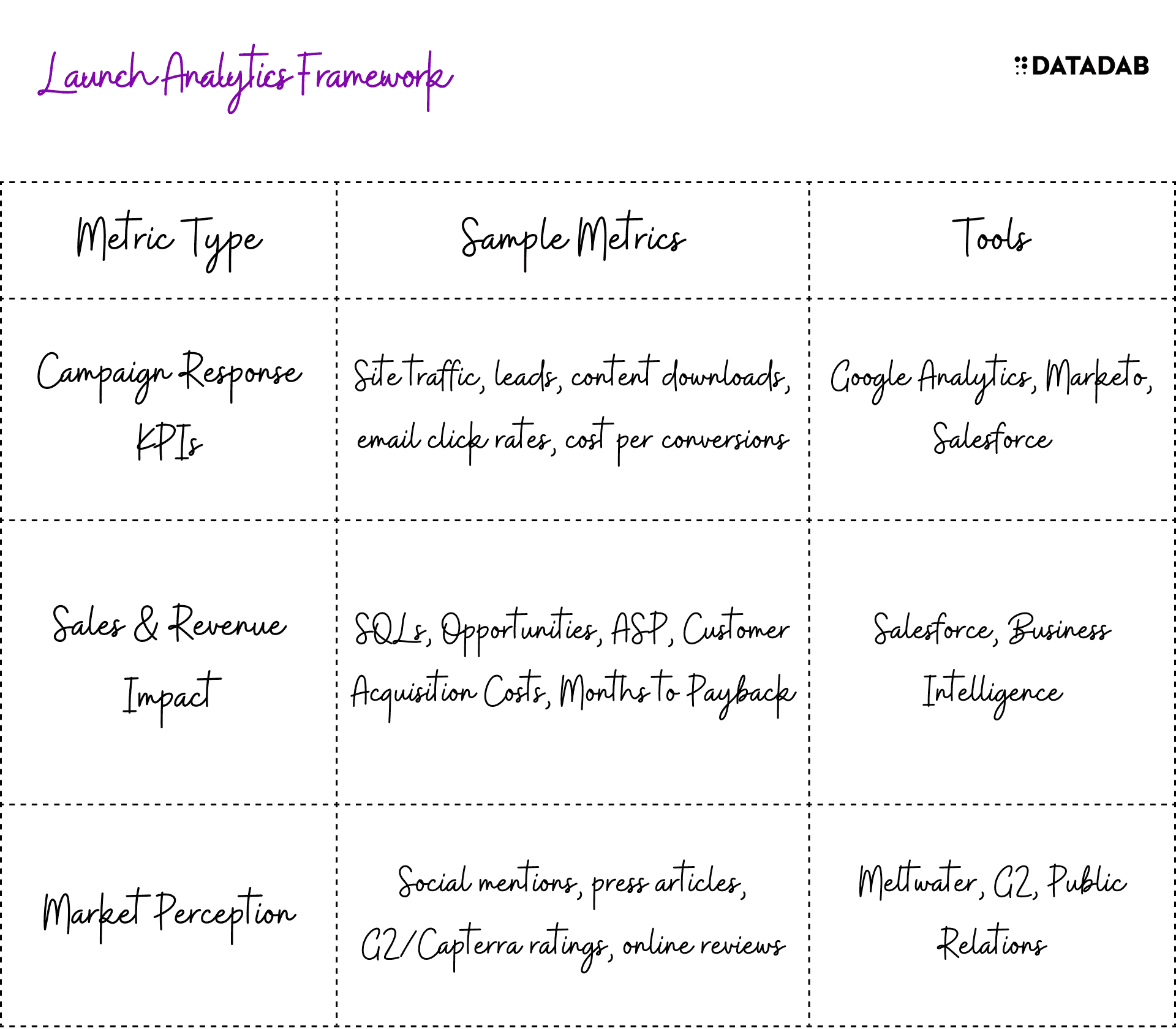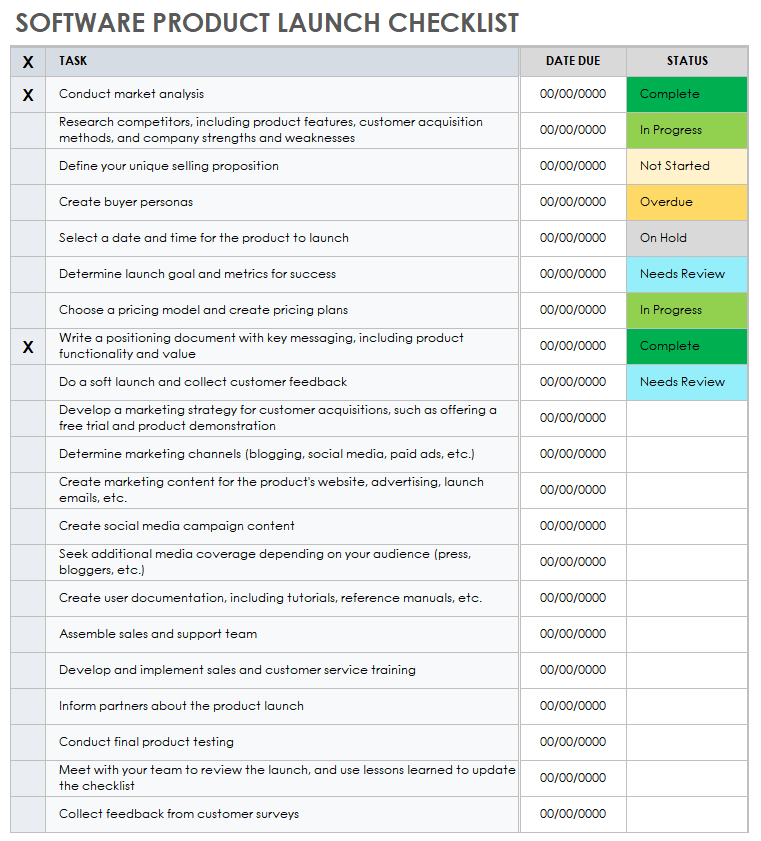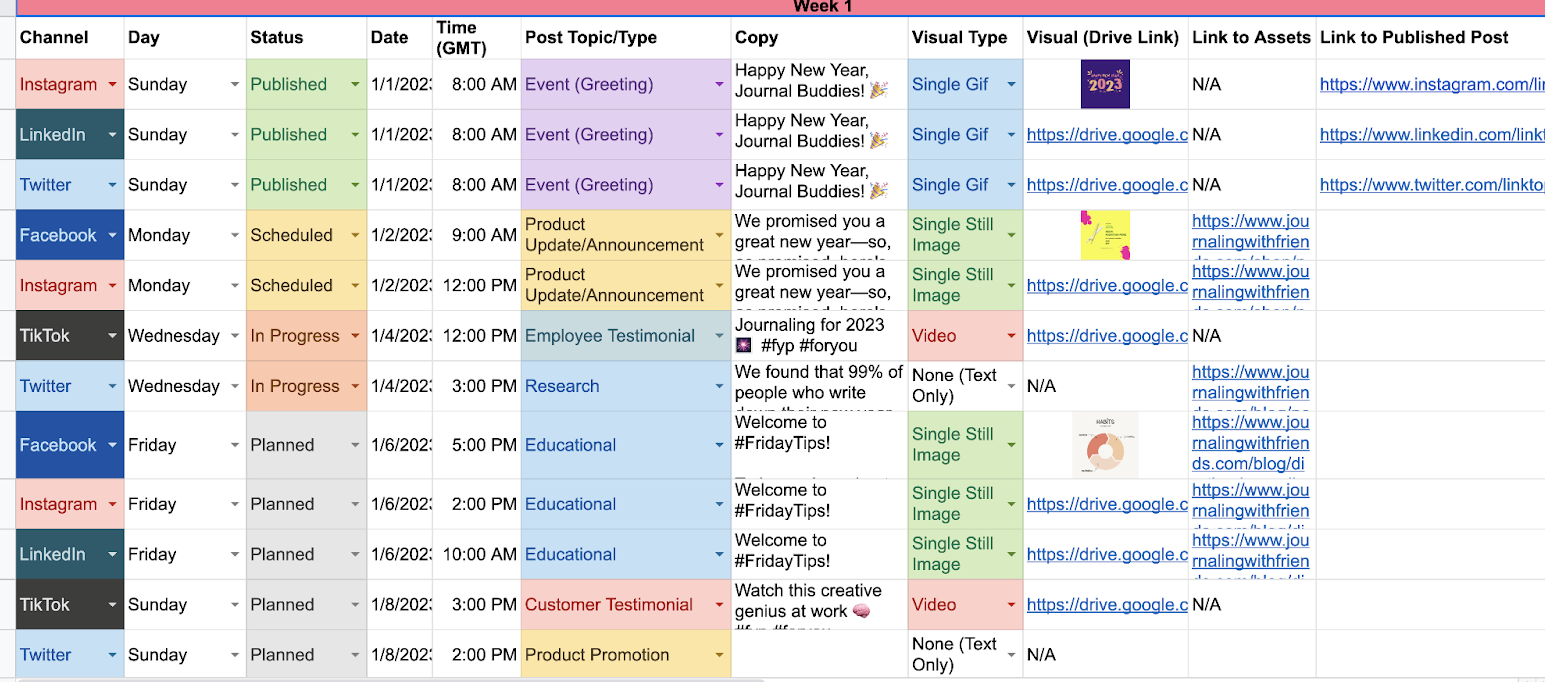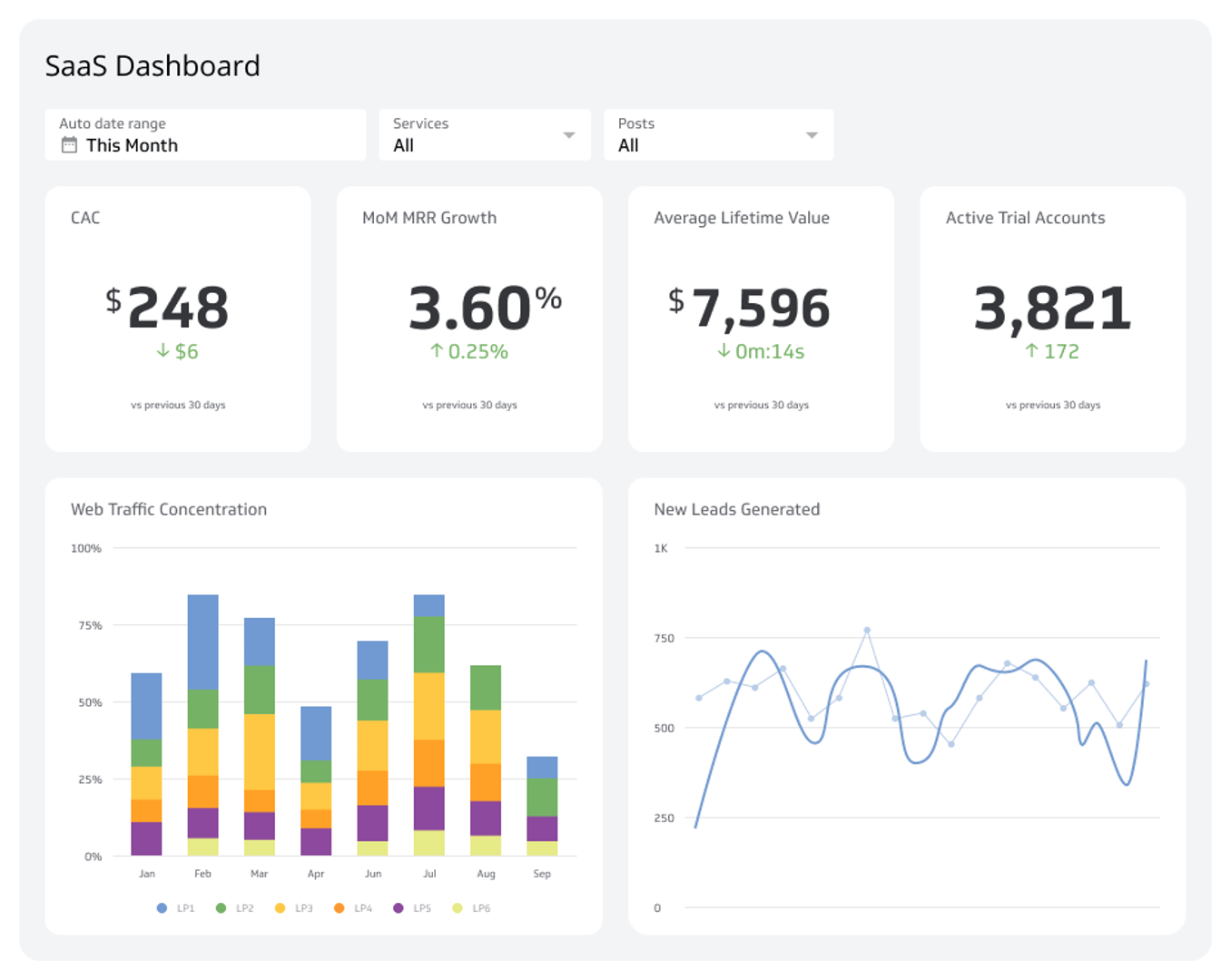You've put in countless hours into crafting something remarkable that brings fresh solutions to problems. But anxiety inevitably creeps in as launch day nears — what if no one cares? Believe me, I've been there too many times myself.
After a decade helping startups make splashes (and plenty of flops early on), I’ve hammered out a road-tested promotional blueprint engineered to grab attention, ignite growth, and establish your solution as a must-have.
I promise this launch guide is not filled with the same old textbook strategies repackaged (“just get some press and throw up a video!”). I’ve got the hard-earned ingredients that actually move the needle for player-derived brands — topped off with a spicy twist of my Bangalore secret sauce.
Now, let’s get cookin’!

The Importance of a Well-Planned Product Launch
Your product launch sets the trajectory for your entire business. It's your first and best shot at making a strong impression and attracting an initial core customer base. Do it right, and you'll propel momentum that snowballs over the coming years. Mess it up, and you’ll face an uphill recovery battle.
Securing 10x-100x+ user growth in your first year requires meticulous planning and flawless execution across the entire customer journey. You’ll need to identify relevant target segments, craft targeted messaging, execute multifaceted promotions, monitor performance metrics to double down on what’s working—the list goes on.

Think of your product launch plan as the roadmap guiding each step required to acquire, activate, and retain ideal users in the early days. To help you sketch out this strategic blueprint, I’ll cover my step-by-step framework across the pre-launch, launch, and post-launch phases.
Pre-Launch Preparations
The weeks and months before your launch require upfront legwork to ensure day-one success. Specifically, you need to research your market landscape, define goals and metrics, and create urgency through early promotion.

Market Research and Target Audience Analysis
Who specifically stands to benefit most from your product? Are existing solutions failing to solve key hair-on-fire problems for certain businesses or departments? Pinpoint exactly who faces these issues to intuitively market to their needs during launch.
Common target dimensions include:
- Company Size/Industry
- Department/Job Title
- Technology Stack
- Revenue Band
- Growth Stage
Once you map your total addressable market across these segments, you can start reaching out for customer discovery calls. Directly speak with your ideal users to clarify needs and pain points. Integrate feedback into positioning and messaging workshop.
Conducting diligent upfront research and planning is tedious, but essential. It can be tempting to rush into outward-facing launch activities, but without understanding your ideal customers and setting metrics-driven goals based on their needs, your shots will miss the mark. Take the time before launch to chat directly with people mirroring your perfect users, map their journeys, pinpoint where current solutions fall short. Design an offering that fits their lives like a glove before pulling the trigger.
Setting Clear Goals and Objectives
With target users and their challenges defined, set tangible process- and outcome-based goals, including:
- User acquisition volume: 100, 500, or 1000+ signups
- Conversion benchmarks: 40% trial signup rate
- Engagement targets: 50% weekly retention rate
- Business impact: 20% boost in subscription revenue
Setting ambitious yet achievable targets provides tangible processes and outcomes to monitor and optimize launch performance.
Timeline and Milestones for a Smooth Launch
Next, work backwards from your launch date to map out project plans by week and month across departments.
Sample 6-Month Pre-Launch Timeline
| Month | Marketing | Sales | Product | Design |
|---|---|---|---|---|
| 6 Months Out | Start content strategy and SEO | Build early access and launch sales scripts | High-level product requirements | Brand stylescapes for visuals |
| 5 Months Out | Identify press and blogger outreach targets | Craft customer success onboarding plan | Prioritize MVP feature scope | Draft homepage layouts |
| 4 Months Out | Set up marketing automation workflows | Establish CPQ and billing | Start development sprints | Complete visual asset design |
| 3 Months Out | Grow social media and email subscribers | Train sales team on positioning | Internal QA testing | QA website and collateral |
| 2 Months Out | Brief PR agency on announcements | Upload contacts for outbound | Load testing at scale | Optimize page speed and conversions |
| 1 Month Out | Send first launch teaser email | Schedule demos | Bug fixes and refinements | Launch site on CMS |
Rally all teams to hit integral targets month-over-month and ultimately align for a successful coordinated debut.
Building Your Product Launch Marketing Plan
With preliminary objectives in place, detail your complete go-to-market launch strategy. Document precisely how your positioning, messaging, and multichannel promotions will attract your identified high-value users.

Key Components of an Effective Marketing Plan
Here are the core sections to cover within your executed launch plan playbook:
Target Audience: Specify your ideal customer profile across titles, industries, company sizes, tech stacks, and other attributes. Include both primary and secondary buyer personas.
Positioning and Messaging: Detail your brand promise and product differentiation as the best solution for your audience’s needs. Include messaging frameworks tailored to each persona’s pain points.
Market Landscape: Analyze strengths and weaknesses of current competitor offerings relative to your unique value prop. Identify gaps in the marketplace your product fills.
Goals and KPIs: Finalize volume, performance, and business impact targets across acquisition, activation, and revenue.
Promotions Mix: Outline your omnichannel content, social media, PR, events, paid ads, referrals promotion strategy per milestone.
Post-Launch Plan: Describe follow-on content campaigns, conferences, nurture tracks after launch to maintain momentum.
Circulate this plan across leadership to align all contributors working in concert toward core objectives. With your playbook defined, now shift focus to crafting the messaging and branding.
Don’t think of your go-to-market launch plan as a static document.
Once created, convene your marketing, sales, and leadership teams every month to review, update, and align on the strategy as you iteratively test and learn from prospect interactions. Refine targeting and messaging based on response signals. Adapt campaign budgets according to the highest performing channels quarter by quarter. Your plan will evolve rapidly, so ingrain regular reviews to keep pace.
Crafting Your Messaging and Brand Positioning
With your marketing plan set, dedicate focus to honing the messaging customers will see across every piece of launch content and communication.

Developing a Compelling Value Proposition
Your value proposition distills why your offer stands miles ahead of alternatives to solve a specific audience’s pressing problems. Some examples:
“HubSpot’s CRM supercharges sales productivity with automated data entry and integrated analytics unavailable in Salesforce.”
“Trello’s intuitive boards and lists enable technology teams to self-organize and ship faster than rigid project management tools.”
Test messaging with existing users to identify the resonating benefits which compellingly convey your competitive differentiation.
Messaging only resonates when grounded in genuine customer insights. Ego-driven product positioning that focuses more on features rather than actual jobs being done will always flop.
Customers don’t care about you or what your product does nearly as much as how it improves their lives.
Sit down with at least 20 existing and prospective users before finalizing any brand promises or value prop messaging to pressure test relevance.
Identify resonant language pulled directly from their mouths describing their motivations and blockers. Build campaigns from those raw, relatable insights.
Creating Consistent and Engaging Messaging Across Channels
With your core value prop defined, expand messaging frameworks across common use cases and buyer stages. For example:
Problem Statements: “Overwhelmed support teams waste 5+ hours per week manually assigning help tickets based on arbitrary rules in Jira Service Desk.”
Agitate Problems: “Legacy solutions still rely on rigid rules to route tickets, leaving over 40% misassigned.”
Present Benefits: “Our AI Assistant instantly assigns every ticket to the right agent, saving your staff 10+ hours each week.”
Proof points: “Customers report a 62% resolution time improvement and 97% assignment accuracy.”
Calls to action: “See for yourself — start a free trial”.
Build out messaging templates into your launch content calendar to integrate positioning across the website, emails, ads, and collateral. Arm your teams to convey consistent stories that compel targeted demographics.
Digital Marketing Strategies for Your Product Launch
With your messaging and personas locked in, execute omnichannel digital promotions to meet prospects where they actively spend time online.

SEO, Content Marketing, and Social Media Tactics
Launch initiative across owned media channels:
- Blog launch editorial calendar: Develop 12+ educational articles around customer pain points and product solution guides. Mix keyword-optimized thought leadership with link worthy guest contributions.
- Video testimonials and tutorials: Produce explainer and “day-in-the-life” videos conveying value prop. Seed to YouTube and embed onsite.
- Visual asset kit: Create launch announcement illustrations, comparison charts, and snappy quote graphics to decorate social posts and ads. Share assets with both sales teams and integrated partners to co-promote.
- Monthly webinar series: Promote educational live streams across channels. Repurpose recordings into gated offers to capture leads.
- SEO optimized site pages: Ensure that home page, product pages, docs, etc. target primary keyword themes around customer jobs-to-be-done, leveraging schema markup for rich snippets.
- Social media engagement: Strategize relevant hashtag campaigns and launch giveaways/contests to grow subscribers and evangelists.
- Reviews and testimonials: Proactively seek positive, validated reviews conveying ROI for your product on review sites like G2Crowd and Capterra.
Bombard media channels where your personas spend time with awareness driving messages tailored to their interests and objections.
Don’t get overwhelmed by all the possible digital promotion avenues and tactics described. You could never cover each sufficiently across every channel simultaneously anyway.
Prioritize owned and earned media plays pre-launch, then fund paid channels once initial signals confirm market appetite. Phase paid campaigns over time based on available budget — outreach expands, but intent and relevance always precede spend. Better to move slower with precision than torpedo brand integrity by getting sloppy.
Leveraging Email Marketing and Paid Advertising
Complement owned channels by buying media real estate to multiply exposure.
- Email nurture tracks: Segment list by persona and lifecycle stage. Create automated nurture tracks with a series of relevant education and offers over 2–4 weeks.
- Retargeting campaigns: Develop sequenced ads across social media, display, YouTube, and search channels tailored to different audiences. Continue retargeting site visitors with relevant messages across their journey.
- Paid social promotions: Sponsor relevant industry hashtags and interest-based topics your audience cares about. Utilize lookalike modeling to expand targeted reach.
- Video discovery campaigns: Promote demo overview and customer testimonial videos on YouTube and social media feeds to build awareness exactly when users show intent signals.
- Search retargeting: Target high-funnel searches for competitor products and pain point solutions. Show contextual ads to compare your alternative solution.
Launch allows for a surge in momentum and buzz to demonstrate instant authority. Capitalize on this visibility spike to establish market dominance quickly.
The Role of Public Relations and Media Outreach
While digital tactics attract direct interest, press coverage builds third-party credibility better than anything. Land tier-1 media coverage across relevant digital publications your customers follow.

Crafting an Effective Press Release
Draft an engaging press release clearly conveying your launch announcement value prop and milestone. Spread across newswires (e.g., PR Web) including:
- Announcement headline with timing pegged to a specific date
- Opening paragraph summarizing product and target market
- Key details on features, launch timing, pricing
- Quote from your founders conveying vision
- Boilerplate company background
Strategies for Gaining Media Attention
Boost odds of pickup with:
- Personalized pitches: Research 50+ reporters at tech/business outlets writing on your subject (use tools like Buzz sumo). Craft custom story pitch angles per their beat for higher open rates.
- Exclusive briefings: Give select press early pre-launch briefings under embargo to provide more lead time for coverage.
- Contributed articles: Provide bylined thought leadership articles conveying insights around launch trends.
- Press invitations: Host an exclusive pre-launch briefing and invite the press to set the narrative.
While splashy tech press drives volume, don’t neglect vertical publications serving your industry. They best reach engaged decision makers despite lower raw traffic.
PR notoriously launches brands overnight, but magic press hits don’t just materialize without work. You must plant seeds systematically weeks and months before launch by building authentic connections with the right reporters.
Ignore spray and pray press release blasts or pay-to-play newswires promising instant coverage — these just email your announcement into a vacuum. Instead, take time to directly engage journalists covering your space by sharing early intel they crave. Scan their Twitter commentary and past articles to uncover the types of stories and trend angles they respond to. Position your exclusive briefing to align with their interests for higher response rates once your news goes public.
Post-Launch Strategies
The real work begins after launch when sales, account management and marketing shift focus to converting and expanding retained accounts.

Key Performance Indicators (KPIs) and Analytics
Continuously monitor metrics across the customer journey, including:
- Acquisition: Site traffic, demo signups, contact form submissions, marketing qualified leads (MQL)
- Activation: Trial starts, feature adoption, retention by week/month
- Revenue: Sales qualified leads (SQL), opportunities created, new customer acquisition, churn
Set up historical baselines pre-launch and monitor trends against projections to quickly spot leading indicators of problems for optimization.
Strategies for Sustained Growth and Engagement
Launch is the starting gun — not the finish line. Operating initiatives to further product-market fit post launch include:
- Embedded & word-of-mouth triggers: Incentivize referrals from customers and partners. Integrate post sign-up sharing prompts into user workflows.
- Value-driven news jacking: Position executives as industry thought leaders around trending news events by contributing meaningful perspectives.
- Expansion content positioning: Develop follow-on content series around use cases for different roles and verticals.
- Loyalty and advocacy incentives: Spotlight power users as brand advocates. Develop customer advisory councils.
- Additional market testing: Expand localized versions and niche segmentation targeting if initial sub-sets product-market fit.
- Ongoing reviews generation: Continue proactive review collection from new users, conveying quick ROI.
- Bolster support experience: Optimize knowledge base, train client success managers, and refine onboarding to drive renewals.
Plan launch as a multi-stage process — not a one-time event — to maximize customer lifetime value. Momentum compounds when deliberately stoking the fire.
Tracking detailed performance data is mandatory, but don’t become paralyzed endlessly analyzing reports. Once clear directional momentum surfaces across target acquisition, activation, and revenue KPIs, shift focus toward actionable optimization. For example, rapidly iterate on high-performing campaign messages and media partnerships by further testing nuances week-to-week.
Alternatively, quickly cut budget from ineffective channels, diverting resources toward what works. Launches progress through swift educated experimentation, not reactive micromanagement.
Launch Like The Best
It's hard to go from building in a vacuum to getting more users. But with the above pre-launch, launch, and post-launch roadmap, your next product launch can surpass all prior. Let me know what other tips you leverage for blockbuster launches!






